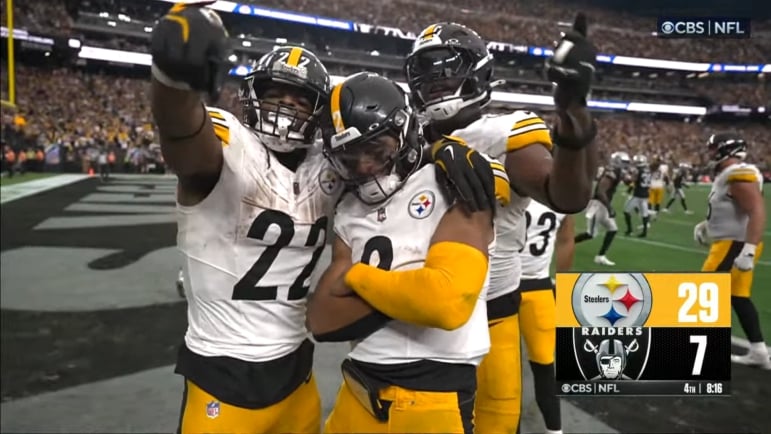Build-up tactics: Is the high-risk strategy worth the reward?

“I cannot believe what I’m watching,” exclaimed Tim Sherwood on Soccer Saturday as he saw Brighton give the ball to Chelsea once again in the final third and concede another goal during a ridiculous first half at Stamford Bridge.
Opposition teams had only turned over the ball high up the pitch against Brighton once in the first five matches of this season. Chelsea did it five times, scoring twice from those moments on their way to a 4-2 win.
It was a disastrous display from Brighton which left their build-up approach open to criticism.
Chelsea were not much better at it. They were caught out twice, with four of the six goals in those first 45 minutes coming from players unsuccessfully playing out from the back.
This tactic has been a feature of this season so far, with teams increasingly willing to take chances in and around their own box in a bid to beat the press and find space further up the field.
But any slip-up is so fraught with danger it often leaves observers wondering whether the reward is worth the risk.
Wolves were almost undone in just this way when Mohamed Salah pounced in the area.
But it was the approach of Gary O’Neil’s side in the final 15 minutes of their match with Liverpool which brought the tactic into further focus.
Gary Neville, on co-commentary for Sky Sports, made his irritation clear as Wolves – needing a goal at home – persisted with overly-patient build-up play.
“The job, really, is to get the ball, with quality, into your forwards’ feet as quickly as possible,” he said. “A lot of teams have forgotten that is the essence of football.”
In that quarter of an hour, Wolves’ Mario Lemina, who had dropped into centre-back, had the most touches. Goalkeeper Sam Johnstone and another defender Toti were not far behind. But key attackers Hee-Chan Hwang and Matheus Cunha were starved of the ball.
O’Neil admitted himself his team had made errors with their decision making but the idea is now a prevalent one in English football.
The average pass distance has fallen in recent seasons, as teams forego long, direct passes in favour of more intricate build-up.
The passing distance from goalkeepers has reduced significantly, down more than four metres on average from three years ago.
Looking at the trend over a longer period of time, it is an intriguing idea that Man City boss Pep Guardiola – and the enormous success he has had since coming to the Premier League – has influenced coaches across the land and up and down the divisions. Although it is also notable his City side have lost the ball the fewest times to high-pressing opponents so far this season. Not many sides can match City’s quality on the ball.
It is not just the Premier League where playing out from the back – and the glaring errors when it goes wrong – can be seen. The Championship, League One and League Two have also seen dramatic rises in the percentage of short passes being played by teams in their own half.
The number of high turnovers leading to a shot for an opposition team has followed suit.
In fact, with 15.8 per cent of this season played, teams have already made 25 per cent of the total errors leading to goals and shots we saw last season.
“If you haven’t got the players to do it or they can’t do it well enough, don’t do it,” pled Sherwood amid the chaos at Stamford Bridge on Saturday.
But the frustrations around the application and success rate of this high-risk strategy look set to be a key theme of this campaign.
Potter: Football is a mistakes game
Graham Potter told Monday Night Football: “The challenge is choosing the right option once you’ve committed a lot of the opposition forward. You deal with the risk of building up in your final third, but you then have to make the most of it to get your players in one-v-one situations.
“Ultimately it is about trying to eventually isolate players in two-v-twos and one-v-ones higher up to give yourself more space to attack. It takes a high-pressure ball and the goalkeeper needs to get involved but wherever the pressure isn’t at its highest, there is a chance to break forward – but it doesn’t happen every time.
“Sometimes it takes a longer pass to break the first line of pressure but sometimes you have to go backwards to draw out the press. It’s about stretching the opposition and making them disorganised at the back. For every two clips where it is successful there are 200 clips where it’s not.
“Football is a mistakes game. You don’t succeed all the time and most of your attacks fail as it’s a low-scoring game. But you have to keep sight of the purpose and effectively keep working on it to find that numerical advantage.”
Jamie Carragher told Monday Night Football: “When you’re one of the best teams in the Championship, you dominate possession. When you come up to the Premier League, you’re coming up against unbelievable athletes and teams who press unbelievably well.
“When you do get through a team’s first line of pressure and you’ve got the opportunity to go forward, I’d be trying to go forward if I could. If you keep coming out and starting again, the pressing teams will eventually win the ball back off you.”
Related
Urban Meyer predicts College Football Playoff change, and the SEC…
College Football Playoff expansion appears to be imminent as the SEC and Big Ten look to use their combined power to redesign the format to their advantage.Whil
Chicago Bears Potentially Targeting Two Georgia Football Players in NFL…
The Chicago Bears could potentially be targeting two Georgia football players in the NFL draft.The NFL Combine is wrapped up and once college programs complete
Michigan State game at Ford Field changes MHSAA football finals…
Adjustments are coming to the Michigan High School Athletic Association football state finals once again in 2025.Michigan State football announced it will play
Florida football announces Pro Day date: Here’s who is participating…
Swampcast talks Florida basketball No. 1 seed chances for March MadnessThe Sun's Kevin Brockway and Noah Ram discuss Florida basketball and UF's chances for a N














